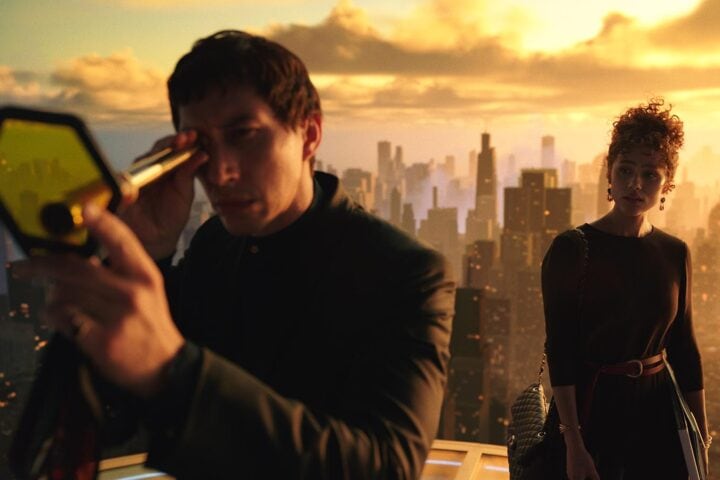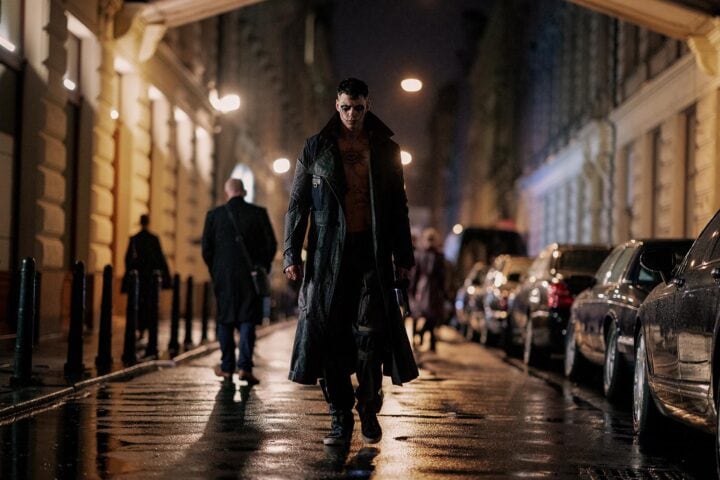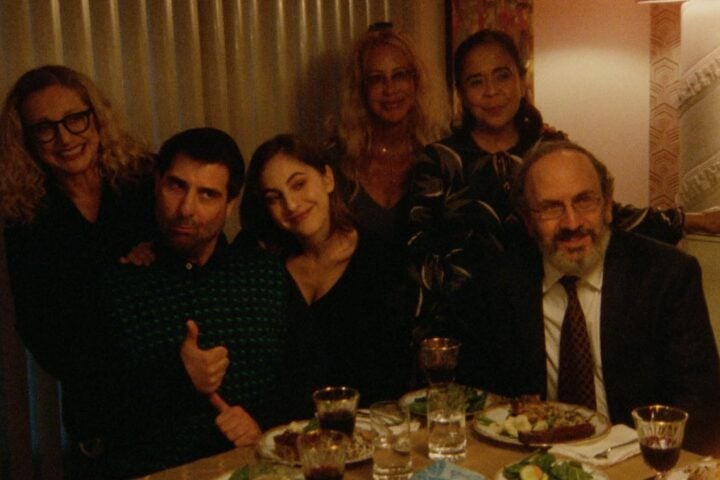John Woo’s Hollywood remake of his 1989 Heroic Bloodshed masterpiece The Killer, after languishing in development hell for almost as long as the original has existed, at long last sees the light of day. Relocating the setting from Hong Kong to Paris, Woo otherwise sticks to the original story, in which a contract killer, Zee (Nathalie Emmanuel), inadvertently blinds bystander Jenn (Diana Silvers) during a hit, and her refusal to murder the woman to tie up loose ends ultimately brings her into an unlikely alliance with a noble cop, Sey (Omar Sy).
Woo wastes little time showcasing his visual signatures, stuffing the first few minutes of The Killer, depicting Zee inside a church, with gliding tracking shots and low-angle compositions that immediately paint Zee and Sey as heroic. Oh, and there are doves—or, at least, one dove and two pigeons. The action also comes early and often, and Woo still delivers it with panache.
When, for example, Zee’s handler, Finn (Sam Worthington), realizes that she will not kill Jenn and thus will put them at risk, he swiftly schedules a hit on her that breaks out into a high-speed chase that leads back to the hospital where Jenn is recovering, at which point a massive shootout erupts. Woo adroitly tracks these interlocking set pieces, first sending numerous vehicles flipping and spinning out on crowded streets before the shootout uses earlier mapping of the space in Jenn’s ward to guide the viewer through corridors as both Zee and Sey dive in and out of cover as henchmen are blown into walls and through windows from gunfire.
By the same token, Woo’s old-school methods that once looked balletic on film—ample coverage using variable frame rates, the heavy use of slow motion to linger on characters flying through the air with guns drawn—lose some of their elegance on digital. Where his manipulation of film speed often resulted in slurred, at times impressionistic movement, digital’s faster and more precise handling of the same changes renders each change in frame rate in sudden, jerking motions. Elsewhere, Woo’s love of filling the frame with sparks and explosions becomes distracting as the camera keeps rendering every minute detail of muzzle flash or electric discharge so vividly that it draws your eye from the larger flow of a given action.
More pressingly, this remake is absent the far richer character development that made the original as much a melodrama as a shoot-’em-up. The 1989 film swiftly established and then complicated the relationships between the three main characters until it became difficult to separate platonic friendship, professional respect, and even romantic intrigue. Here, Zee, Sey, and Jenn are thinly sketched, with Emmanuel, Sy, and Silvers spouting their lines with perfunctory, plot-advancing flatness. Zee is especially baffling given the naïveté this seasoned assassin regularly displays, and compared to the more cynically aware triad politics of the original, Zee’s relationship with Finn is oddly docile and childlike, with the killer regularly asking for assurance that her targets “deserve death” with doe-eyed innocence.
The 1989 movie understood the moral torpor barely hidden behind facades of professional honor, culminating in an agonizing finale that confronted its dubious heroes with the violent ends awaiting their violent lives. The remake, though, cops out, validating Zee’s self-absolving ethical denial with a more hopeful conclusion that, in context, feels dishonest and patronizing.
Since 2001, we've brought you uncompromising, candid takes on the world of film, music, television, video games, theater, and more. Independently owned and operated publications like Slant have been hit hard in recent years, but we’re committed to keeping our content free and accessible—meaning no paywalls or fees.
If you like what we do, please consider subscribing to our Patreon or making a donation.




